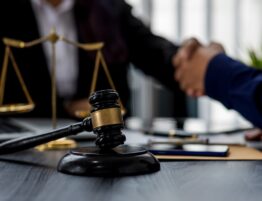
Injuries occurring on government property present a unique set of legal challenges due to the involvement of governmental entities. Whether the injury happens on federal, state, or local government premises, understanding the complexities of pursuing a legal claim is crucial. In this blog, we will explore the intricacies of navigating the legal terrain when injuries occur on government property and provide insights into the steps individuals should take to seek compensation for their damages.
Understanding Sovereign Immunity:
- Sovereign Immunity Basics: Sovereign immunity protects government entities from certain legal actions, shielding them from being sued without their consent. While this immunity is not absolute, it can pose significant challenges for individuals seeking compensation for injuries on government property.
- Exceptions to Sovereign Immunity: Most jurisdictions have exceptions to sovereign immunity that allow individuals to bring claims under specific circumstances. These exceptions may include instances of negligence, dangerous conditions, or actions falling outside the scope of official duties.
Determining Liability in Government Property Cases:
- Negligence Claims: To pursue a legal claim, individuals must establish negligence on the part of the government entity or its employees. This involves demonstrating that the injury resulted from a breach of the government’s duty of care.
- Dangerous Conditions: Claims may be based on dangerous conditions existing on government property that contributed to the injury. This can include poorly maintained premises, lack of warning signs, or inadequate safety measures.
- Motor Vehicle Accidents: In cases involving accidents on government-owned roads or premises, individuals may pursue claims if the accident resulted from the government’s negligence, such as improper road maintenance or traffic signal failures.
Steps to Take After an Injury on Government Property:
- Seek Medical Attention: Prioritize your health and well-being by seeking prompt medical attention for any injuries sustained on government property. Documenting your injuries is crucial for the legal process.
- Report the Incident: Report the incident to the appropriate authorities, such as security personnel or property management. Ensure that an official record is created detailing the circumstances of the injury.
- Gather Evidence: Collect evidence related to the incident, including photographs of the scene, any hazardous conditions, or defective equipment. Gather witness statements, if possible, to support your claim.
- Identify Governmental Entity: Determine the specific government entity responsible for the property where the injury occurred. This is crucial for understanding the applicable laws and procedures.
- Consult with an Attorney: Given the complexities of government property injury claims, consult with an experienced personal injury attorney. They can assess the circumstances, identify potential liability, and guide you through the legal process.
Navigating the Claims Process:
- Notice Requirements: Some jurisdictions have notice requirements for claims against government entities. Failing to adhere to these requirements can jeopardize your ability to pursue a legal claim.
- Filing a Lawsuit: If negotiations with the government entity or its insurer do not lead to a satisfactory resolution, filing a lawsuit may be necessary. This involves adhering to specific legal procedures and timelines.
- Settlement Negotiations: Government entities may be open to settling claims before reaching the courtroom. Experienced attorneys can engage in negotiations to secure fair compensation for your injuries.
Conclusion:
Injuries on government property demand careful navigation of complex legal terrain due to sovereign immunity and specific procedural requirements. If you or someone you know has been injured on government property, seeking the guidance of experienced personal injury attorneys, such as those at Alan Ripka & Associates, is essential. Together, we can work towards holding government entities accountable for negligence and securing the compensation needed for a comprehensive recovery.









